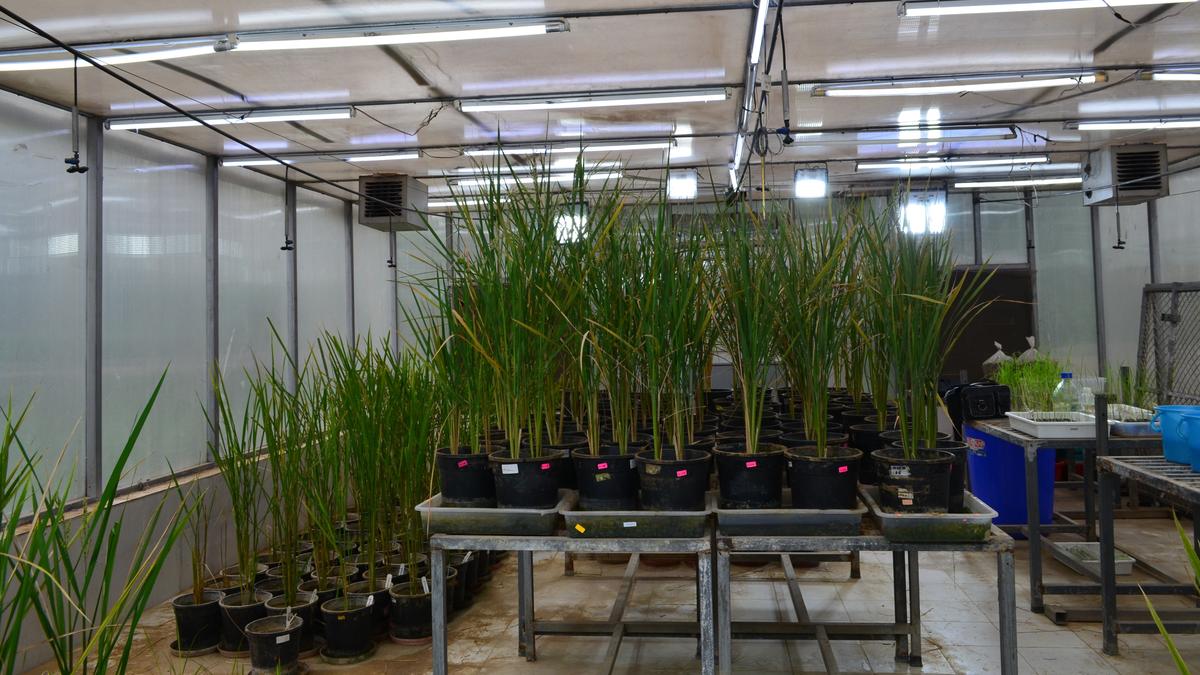Japonica Rice

- 10 Jul 2025
In News:
The National Institute of Plant Genome Research (NIPGR), New Delhi, has successfully used CRISPR-Cas9 gene-editing technology to develop japonica rice lines with enhanced phosphate uptake, leading to up to 40% higher yield under limited fertilizer conditions. The research is published in the Plant Biotechnology Journal.
Background: Phosphorus and Agriculture
- Phosphorus (P) is vital for plant growth, involved in photosynthesis, energy transfer, and root development.
- However, only 15–20% of phosphate fertilizers are absorbed by crops; the rest is lost due to leaching or chemical fixation in soils.
- India imports ~4.5 million tonnes of DAP (Diammonium Phosphate) annually, making it crucial to improve P-use efficiency.
The Innovation: CRISPR-Based Precision Editing
- Target Gene: OsPHO1;2, a phosphate transporter responsible for P movement from root to shoot.
- Repressor Gene Identified: OsWRKY6, a negative regulator of OsPHO1;2.
- Initial approach (complete knockout of repressor) caused negative effects due to loss of other essential functions.
- Final strategy: Only the 30 base-pair binding site of OsWRKY6 on the promoter was deleted using CRISPR-Cas9, ensuring:
- Increased transporter expression
- Normal functioning of other plant processes
- Enhanced phosphate transfer and absorption
Key Outcomes:
- Yield Increase:
- 20% with full phosphate dose
- 40% with only 10% of recommended fertilizer
- Improved panicle number and seed count
- No compromise on seed size, starch content, or quality
- Roots acted as efficient phosphate sinks, absorbing more P from soil
- Gene-editing localized to promoter site, ensuring minimal genetic disturbance
Safety and Regulatory Assurance
- No off-target effects: Verified using leading in silico tools and genome analysis
- No foreign DNA in final seeds: Foreign genes (e.g., Cas9, Agrobacterium vector) eliminated via Mendelian segregation
- Plants with precise edits were screened and only accurate lines were cultivated further
Significance for India
- Phosphorus-deficient soils are common across India, especially in alkaline or acidic regions
- Potential application to indica rice varieties, widely grown in India
- Supports sustainable agriculture by reducing fertilizer usage and environmental runoff
- Strengthens food security and reduces import dependency on fertilizers
About Japonica Rice:
- One of the two main varieties of Oryza sativa (the other is Indica)
- Short, sticky grains; grown primarily in Japan, Korea, China, and other East Asian countries
- Model variety used: Nipponbare, due to ease of genetic manipulation
- Japonica is commonly used in research; adaptation to Indian indica cultivars is under process
